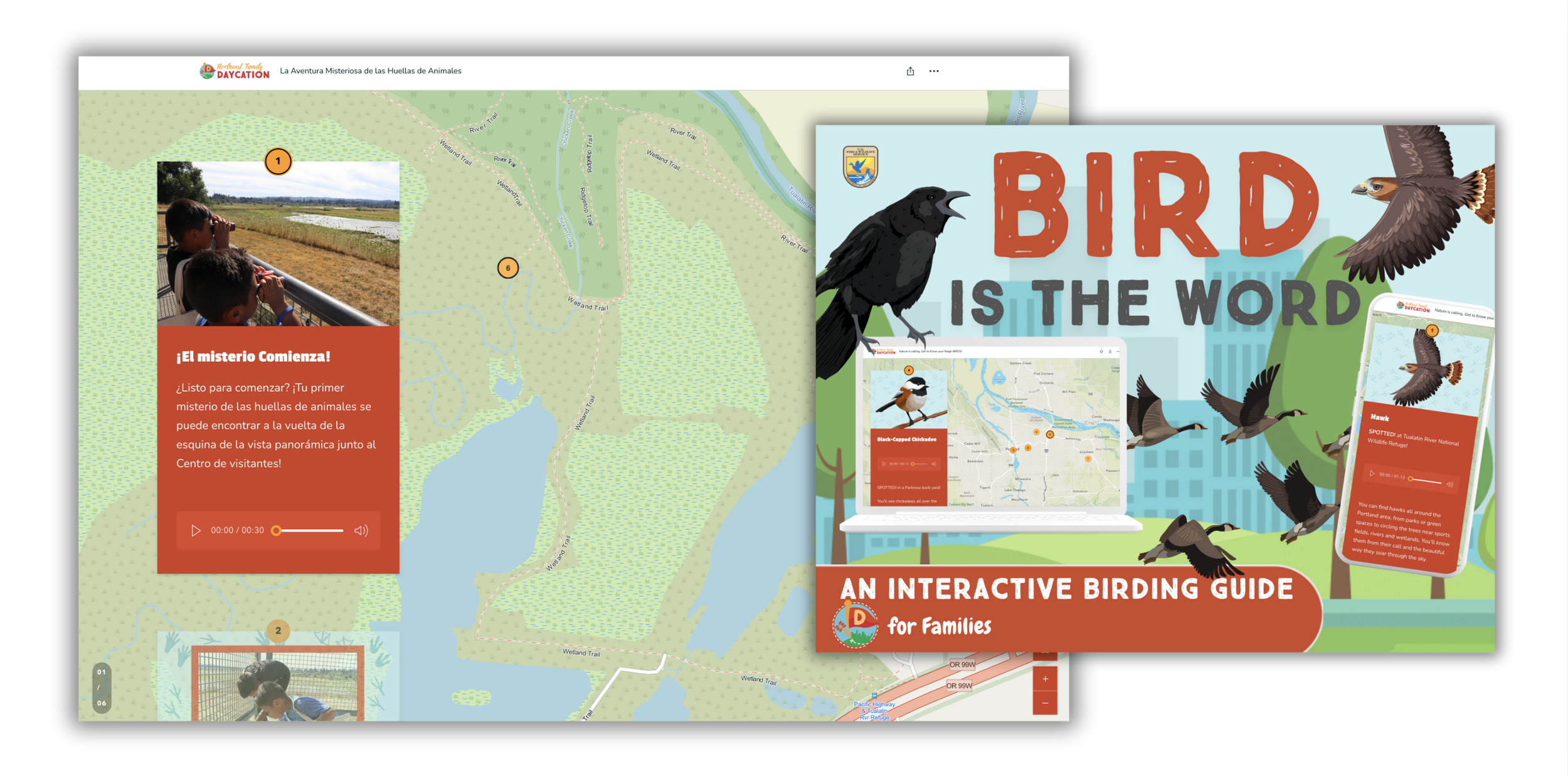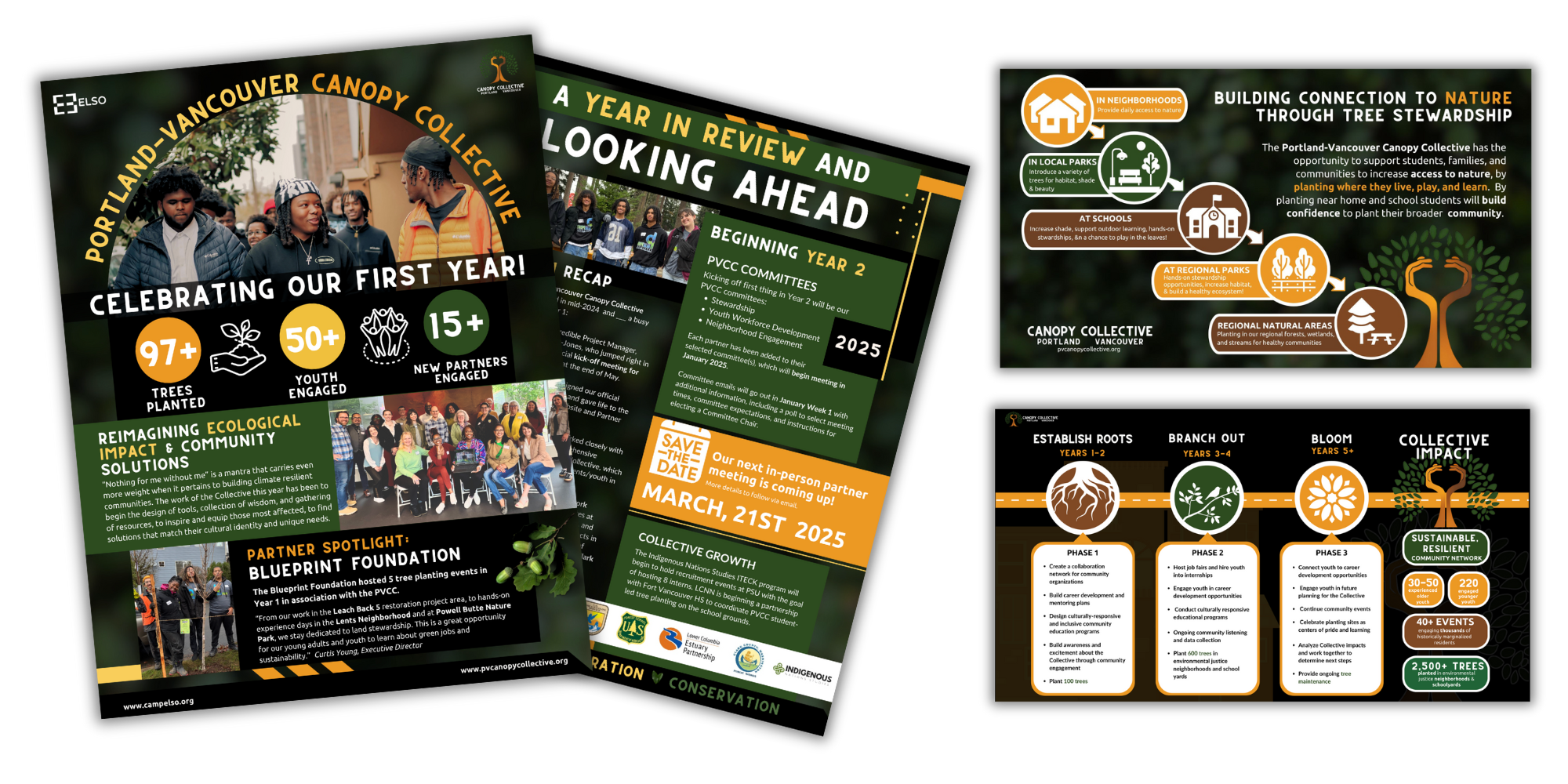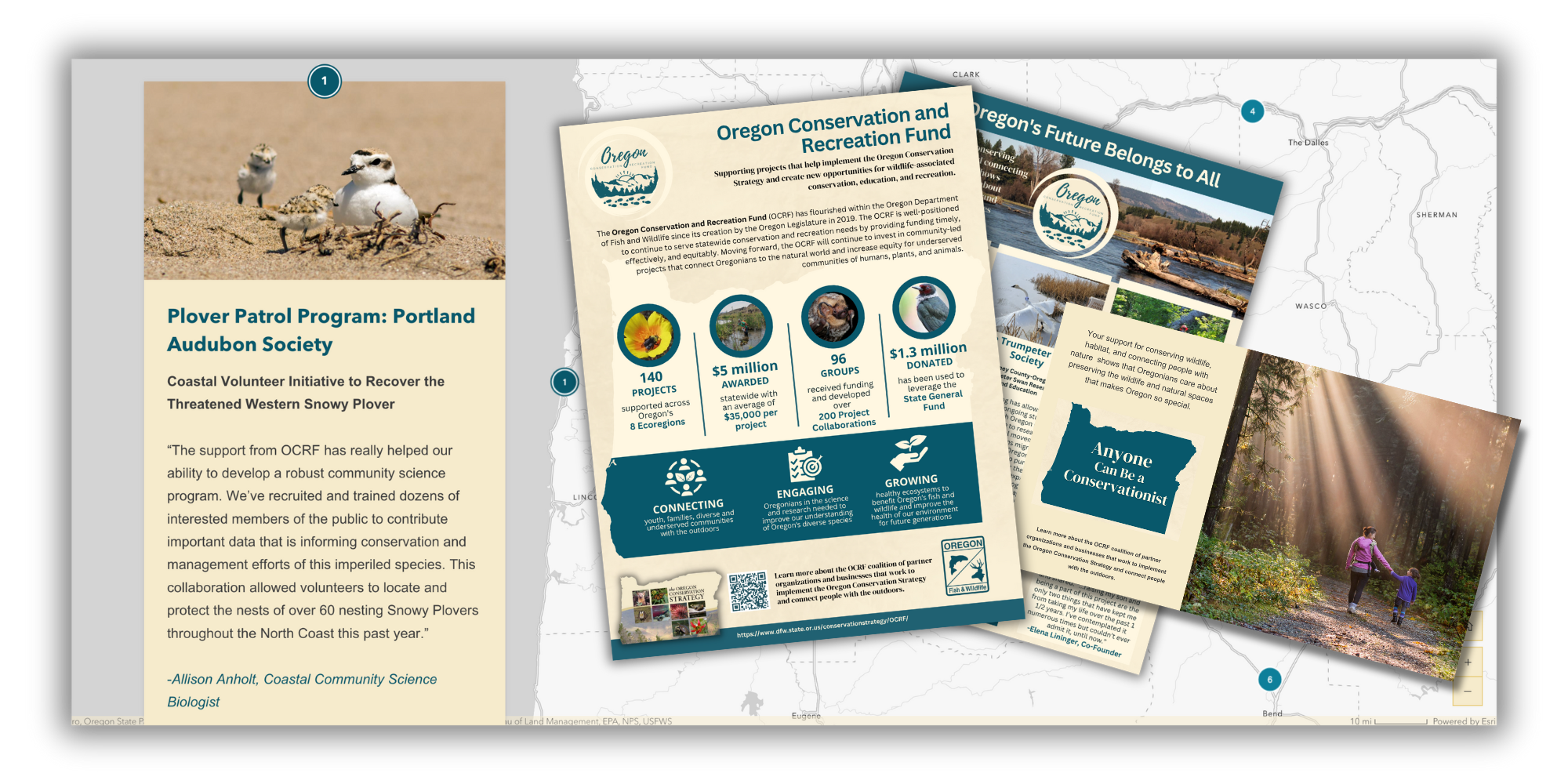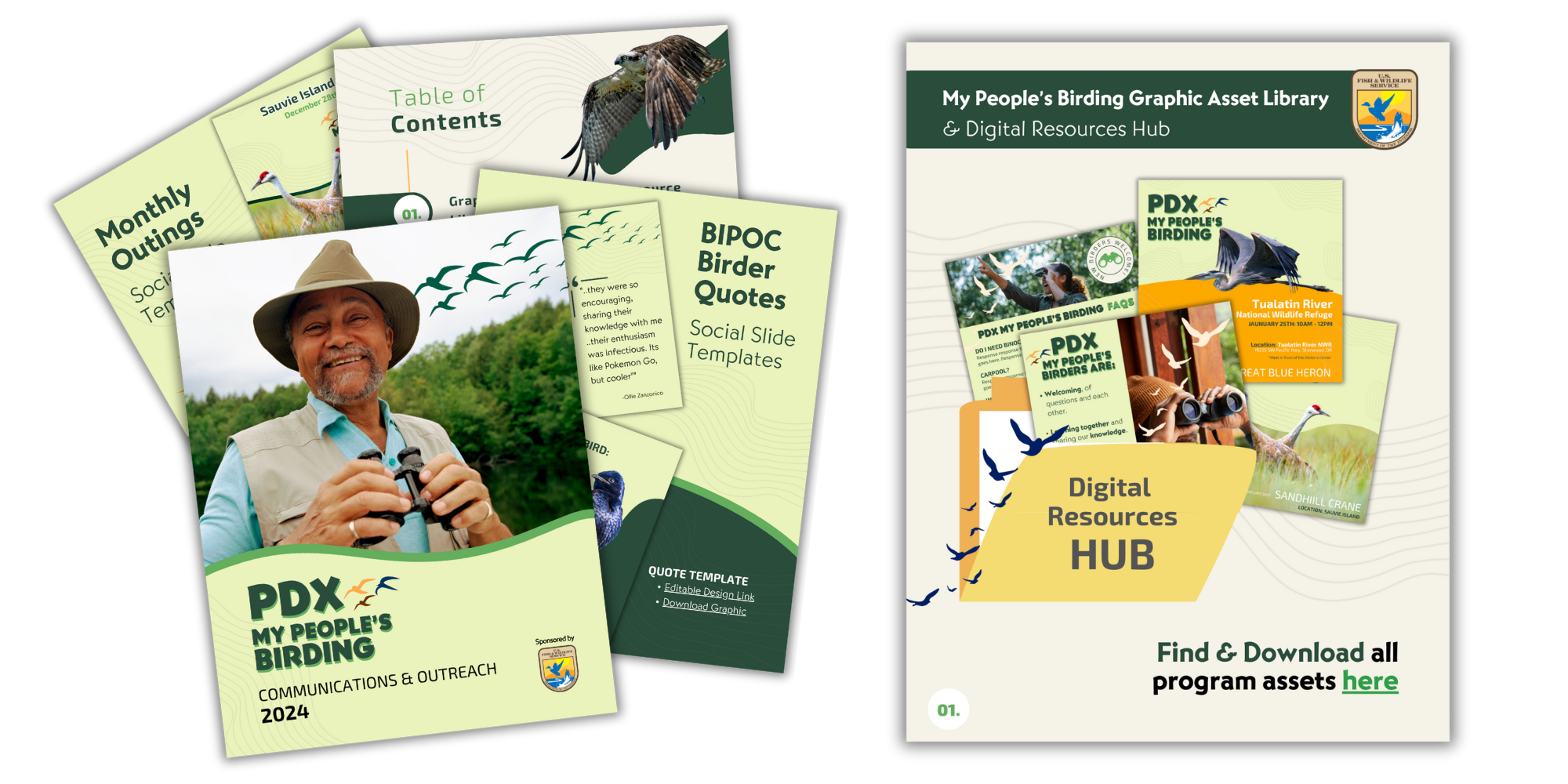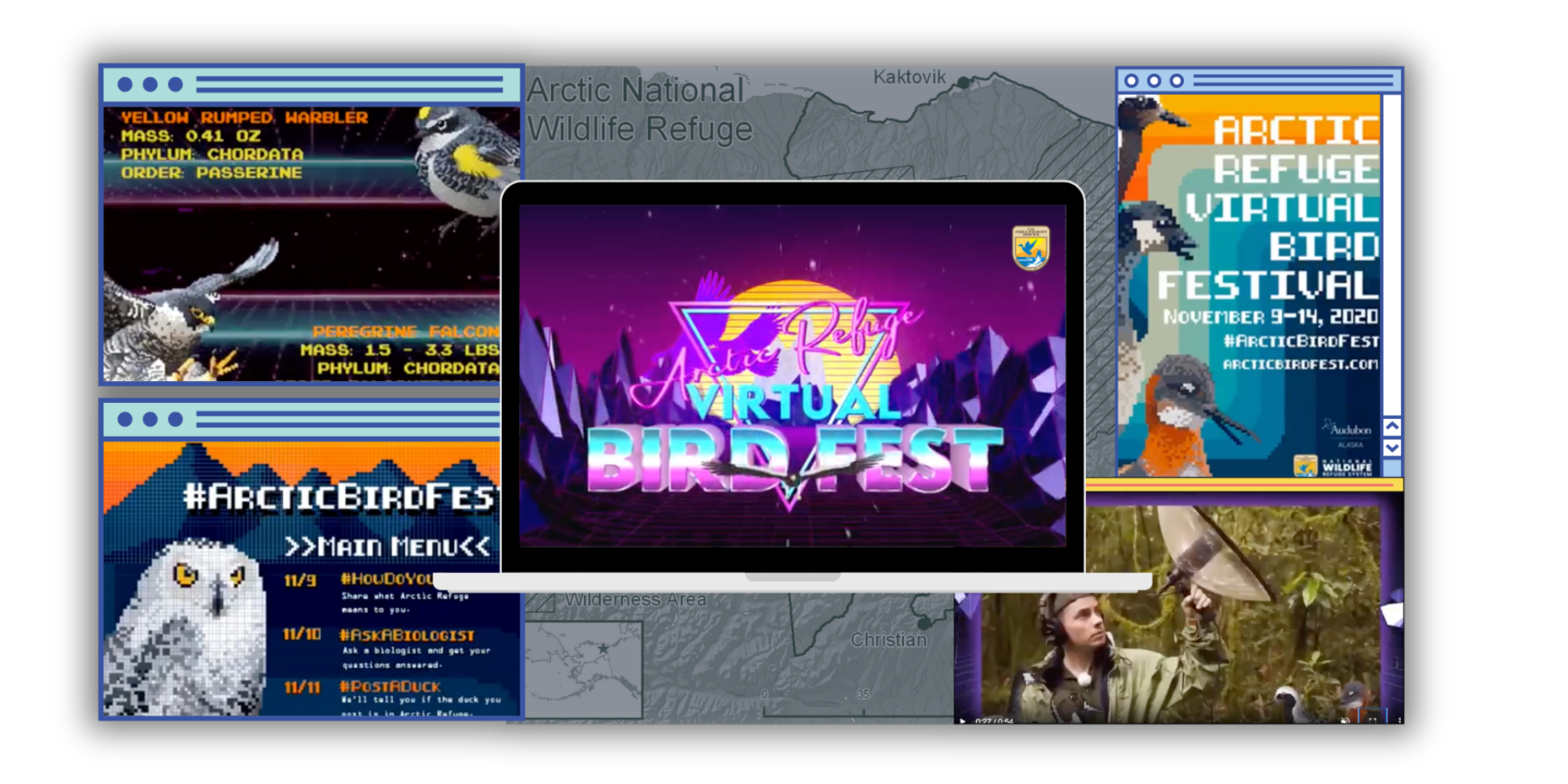
Our Work
Case study:
U.S. Fish & Wildlife SErvice
Urban Wildlife Conservation Program
Project:
Address the growing disconnect between a dense Urban Latino Population, changing U.S. demographic structure, and the relevance of conservation and environmental justice as a “family dinner table” conversation.
Address the disparity in visitors to nearby Wildlife Refuges and the demographic makeup of surrounding communities.
Nurture a connection to nature to cultivate a path towards environmental stewardship, conservation, and enjoyment of public lands for the next generations.
Results:
Over the course of the past 5 years, we have developed a successful, replicable community-centered outreach and engagement program with comprehensive multi-lingual, culturally-responsive resources and activities focused on providing a point of entry for historically marginalized communities. This program has served as a pilot and is poised for replication and expansion in the coming years.
Key Outcomes:
Creation of culturally-relevant, bilingual resources including interactive StoryMaps located at National Wildlife Refuges, interactive Online Birding Guides, and materials focused on introducing conservation work/projects as informed by USFWS scientists.
Multi-year development of a partner network that includes USFWS staff, biologists, governmental, and nonprofit organizations, to cultivate the next generation of environmental scientists/stewards.
Design and implementation of trainings and guides for USFWS staff, scientists, and volunteers focused on communicating conservation importance in accessible, relevant, and engaging ways that brings value to the community at large.
Case study:
CANOPY COLLECTIVE
USDA Forest Service Urban Forestry
The Canopy Collective brings together culturally-specific organizations working at the intersection of multicultural community resilience and environmental justice to expand urban tree canopy, increase living-wage green jobs, and provide connection to nearby nature, over the course of a 5 year program.
Project:
The structure and strategy of the Canopy Collective is a reimagined way to address Ecological Impact Areas by connecting community organizations with the strong local relationships necessary to truly address inequality and climate change to conservation solutions benefitting the very communities they serve and belong to.
Results:
The Canopy Collective launched in mid-2024.
Development and implementation of internal and external communications strategy, public relations management, coordination between conservation and stewardship partners and community organizations in the planning and implementation of project goals.
Development of a brand identity, build-out of a dedicated website with an integrative partner portal hosting newsletters, social campaigns, infographics, and an inter-partner communications channel.
Ahead in Year 2:
Development of a multi-year StoryMap to showcase the project’s key milestones, including planting sites, featured tree species, urban tree canopy timeline, and multi-media storytelling features highlighting the people, partners, and community behind the project.
CASE STUDY:
OREGON DEPT. of Fish & Wildlife
Oregon Conservation & Recreation Fund
The Oregon Conservation and Recreation Fund (OCRF) creates new opportunities for wildlife watching, urban conservation, and other wildlife-associated recreation and supports the Oregon Conservation Strategy. The OCRF invests in community-led projects that connect Oregonians to the natural world and increase equity for underserved communities of humans, plants, and animals.
Project:
Create cohesive collateral materials sharing the impact of the work of the OCRF with key stakeholders and government officials
Results:
Development of communications materials to showcase the work of the OCRF, highlighting the intersection of recreation and conservation in a high-level, at-a-glance format for two distinct audiences:
Conservation-forward
Recreation-forward
Development of a StoryMap featuring select funded projects and supplemental assets to share the work of the OCRF.
Case study:
Migratory bird program
US Fish & Wildlife Service
The Migratory Bird Program works with partners to protect, restore and conserve bird populations and their habitats for the benefit of future generations by: ensuring long-term ecological sustainability of all migratory bird populations, increasing socioeconomic benefits derived from birds, improving hunting and bird watching and other outdoor bird-related experiences, and increasing awareness of the value of migratory birds and their habitats for their aesthetic, ecological, recreational and economic significance.
Project:
As the need for advocacy and legislative action for conservation requires constituent interest, organizations need to become relevant to changing demographic profiles. Address the changing demographics while creating a multi-generational program, in terms of both age and timeline.
Develop a program designed to bring people of color and under-represented/underserved communities to partake in and discover birding.
Results:
Development of the “My People’s Birding” program
Build out of the program, including the creation of imagery and narrative that connects with the intersectional identities of the target demographic, the design a brand that resonates in a tone and texture that feels authentic, and the identification of channels to reach target populations most effectively.
Work with USFWS staff to develop and host outings and events.
Creation of supplemental resources for education and conservation that link to the work and relevance of the Migratory Bird Program.
Case Study:
Arctic National Wildlife Refuge
8-Bit Virtual Bird Festival
we work with
Project:
Create a virtual Bird Festival for the Arctic National Wildlife Refuge that will stand out from the wealth of other organizations hosting virtual events during the pandemic.
Results:
Creation an 8-Bit Bit Virtual Bird Festival, pulling in retro-nostalgia video games as a hook, then tying directly into the work of the Wildlife Refuge itself.
Development of a video series and supplemental assets, as well as a social media and digital campaign strategy featuring 8-bit bird-themed games as well as interviews with biologists, refuge staff, and artists that was rolled out during a week-long virtual bird festival























